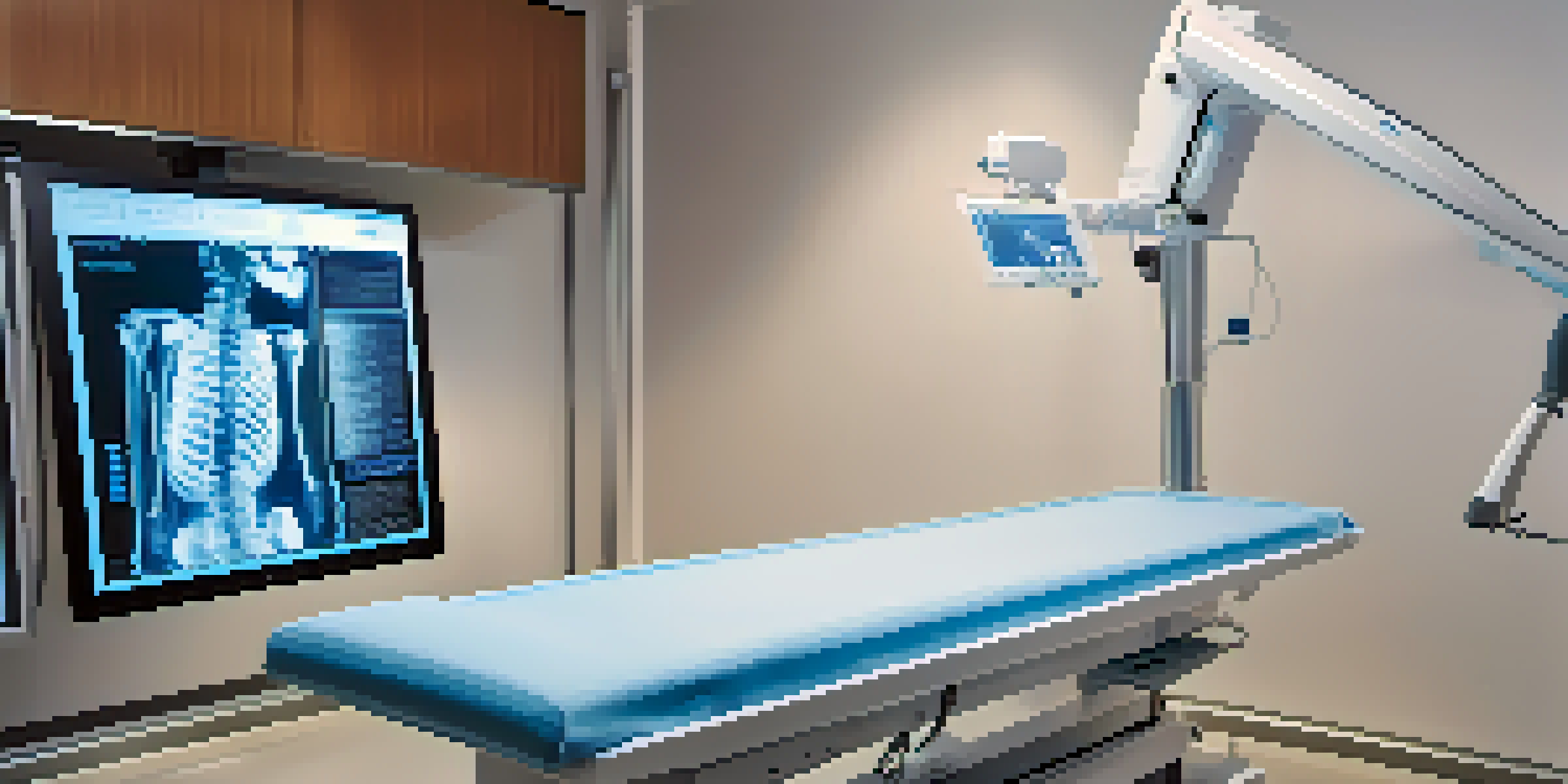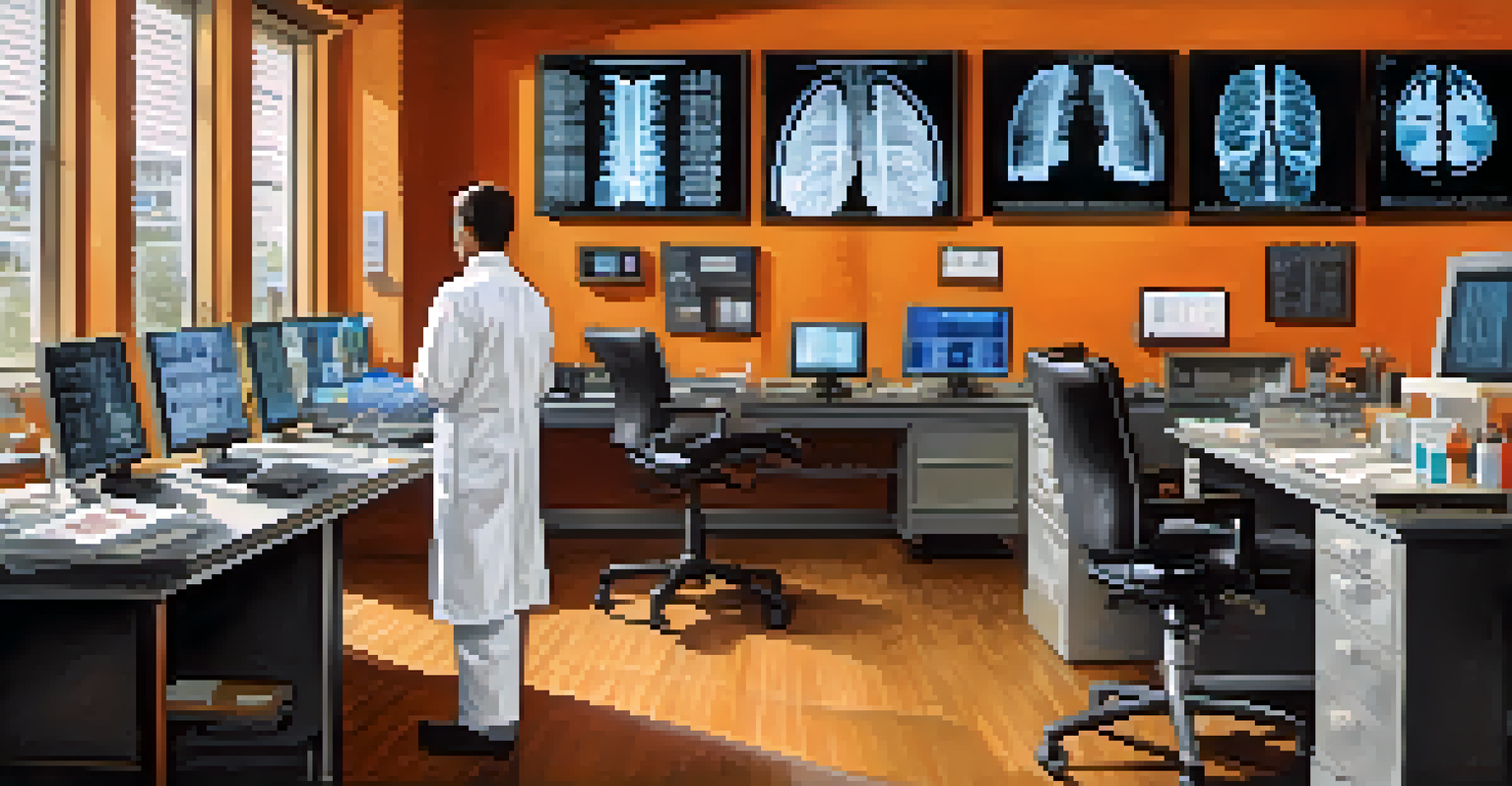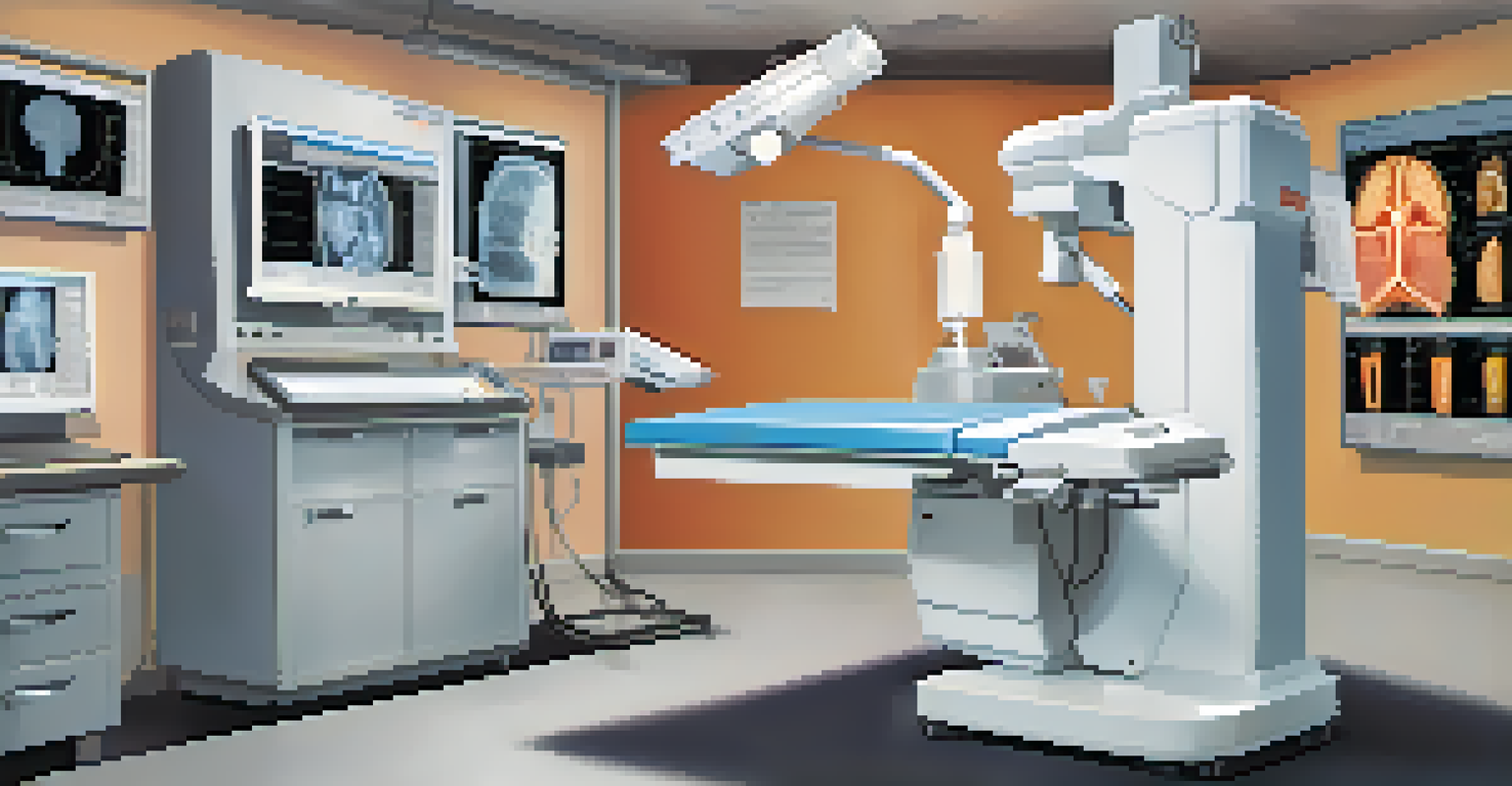X-ray Imaging: Techniques, Benefits, and Clinical Uses

Understanding X-ray Imaging and Its Basics
X-ray imaging is a powerful diagnostic tool that uses radiation to create images of the inside of the body. The basic principle involves passing X-rays through the body, which are absorbed differently by various tissues. Dense materials like bones absorb more X-rays, appearing white on the image, while softer tissues show up in shades of gray.
X-rays are a vital tool in diagnosing and managing health conditions, providing insights that can save lives.
This technique is not only quick but also non-invasive, making it a preferred method for diagnosing a range of conditions. The ability to visualize internal structures helps doctors make informed decisions about further treatment. It’s fascinating how something so simple can provide such detailed insights into our health.
To fully appreciate X-ray imaging, it’s essential to understand how it fits into the broader spectrum of medical imaging techniques. From CT scans to MRIs, each method has unique strengths, but X-rays remain a cornerstone of diagnostic imaging due to their accessibility and effectiveness.
Different Techniques of X-ray Imaging
X-ray imaging techniques have evolved significantly over the years, with several methods now available. Traditional X-rays are often the first choice for assessing bone fractures and infections. However, advancements have led to techniques like fluoroscopy, which allows real-time imaging of moving body parts, such as the digestive system.

Another notable technique is computed tomography (CT), which combines multiple X-ray images to produce cross-sectional views of the body. This is particularly useful for diagnosing more complex conditions, such as tumors or internal bleeding. Each technique serves distinct purposes, catering to various clinical needs.
X-ray Imaging: A Quick Diagnostic Tool
X-ray imaging provides fast, non-invasive insights into the body, making it essential for timely medical decisions.
Digital X-ray technology has also transformed the field, offering faster results and reduced radiation exposure. This advancement not only enhances image quality but also allows for easier storage and sharing among medical professionals, streamlining the diagnostic process.
The Benefits of X-ray Imaging in Healthcare
One of the primary benefits of X-ray imaging is its speed. In many cases, results can be available within minutes, enabling healthcare providers to make timely decisions regarding patient care. This rapid response can be critical in emergency situations, where every second counts.
The most important thing in communication is hearing what isn't said.
Additionally, X-rays are relatively low-cost compared to other imaging modalities, making them accessible to a broader range of patients. This affordability helps ensure that necessary diagnostic procedures can be performed without significant financial burden, promoting better health outcomes.
Moreover, the non-invasive nature of X-ray imaging means that patients do not need to undergo complex procedures to receive essential diagnostic information. This ease of use contributes to higher patient satisfaction and encourages individuals to seek medical attention when needed.
Common Clinical Uses of X-ray Imaging
X-ray imaging is widely used in various clinical settings, particularly in emergency medicine. It plays a vital role in diagnosing fractures, dislocations, and foreign objects within the body. The ability to quickly assess injuries can significantly affect treatment plans and recovery times.
Beyond trauma cases, X-rays are also valuable in diagnosing conditions like pneumonia, where they help visualize lung fields and detect fluid accumulation. This capability is crucial for managing respiratory illnesses effectively and determining appropriate interventions.
Diverse Techniques Enhance Diagnostics
Advancements in X-ray techniques, such as CT scans and digital imaging, improve diagnostic accuracy and patient safety.
Furthermore, X-rays are often employed in dental practices to assess oral health. Dental X-rays enable practitioners to identify cavities, gum disease, and other dental issues that may not be visible during a routine examination, facilitating timely treatment.
Safety Considerations with X-ray Imaging
While X-ray imaging is generally safe, it’s important to consider the exposure to radiation involved. Healthcare providers take precautions to minimize radiation dose while ensuring diagnostic quality. Techniques such as lead shielding help protect sensitive areas, especially in vulnerable populations like children.
The benefits of X-ray imaging often outweigh the risks, particularly when it leads to critical diagnostic information. Nonetheless, patients should always feel comfortable discussing their concerns with their healthcare provider to make informed decisions about their care.
Innovations in technology continue to improve the safety and efficacy of X-ray imaging. With advancements in digital imaging and algorithms, radiation doses are decreasing, making this essential diagnostic tool even safer for patients.
The Future of X-ray Imaging Technology
The future of X-ray imaging looks promising, with ongoing advancements aimed at enhancing both image quality and patient safety. Researchers are exploring new materials and techniques, such as photon-counting detectors, which could further reduce radiation exposure while improving image resolution.
Artificial intelligence is also making its mark in the field, with algorithms being developed to assist radiologists in interpreting X-ray images more accurately. These tools can help identify abnormalities that might be missed by the human eye, leading to improved diagnostic accuracy.
Widespread Clinical Applications
X-ray imaging is widely used in various medical fields, including emergency care and dentistry, for effective diagnosis and treatment.
As technology progresses, we can expect to see X-ray imaging becoming even more integrated into personalized medicine, allowing for tailored diagnostic approaches that consider individual patient needs and specific health concerns.
Conclusion: Embracing X-ray Imaging in Modern Medicine
In summary, X-ray imaging remains an invaluable tool in modern medicine, offering a blend of speed, accuracy, and cost-effectiveness. Its various techniques and clinical applications showcase its versatility across different medical fields, from emergency care to dentistry.
As we continue to embrace technological advancements, the potential to improve diagnostic capabilities and patient safety grows. By understanding the benefits and limitations of X-ray imaging, both healthcare providers and patients can make informed decisions that prioritize health and well-being.

Ultimately, X-ray imaging is more than just a diagnostic tool; it's a gateway to understanding our health better. With ongoing innovations, we can look forward to a future where X-ray imaging enhances patient outcomes and contributes to the ever-evolving landscape of healthcare.